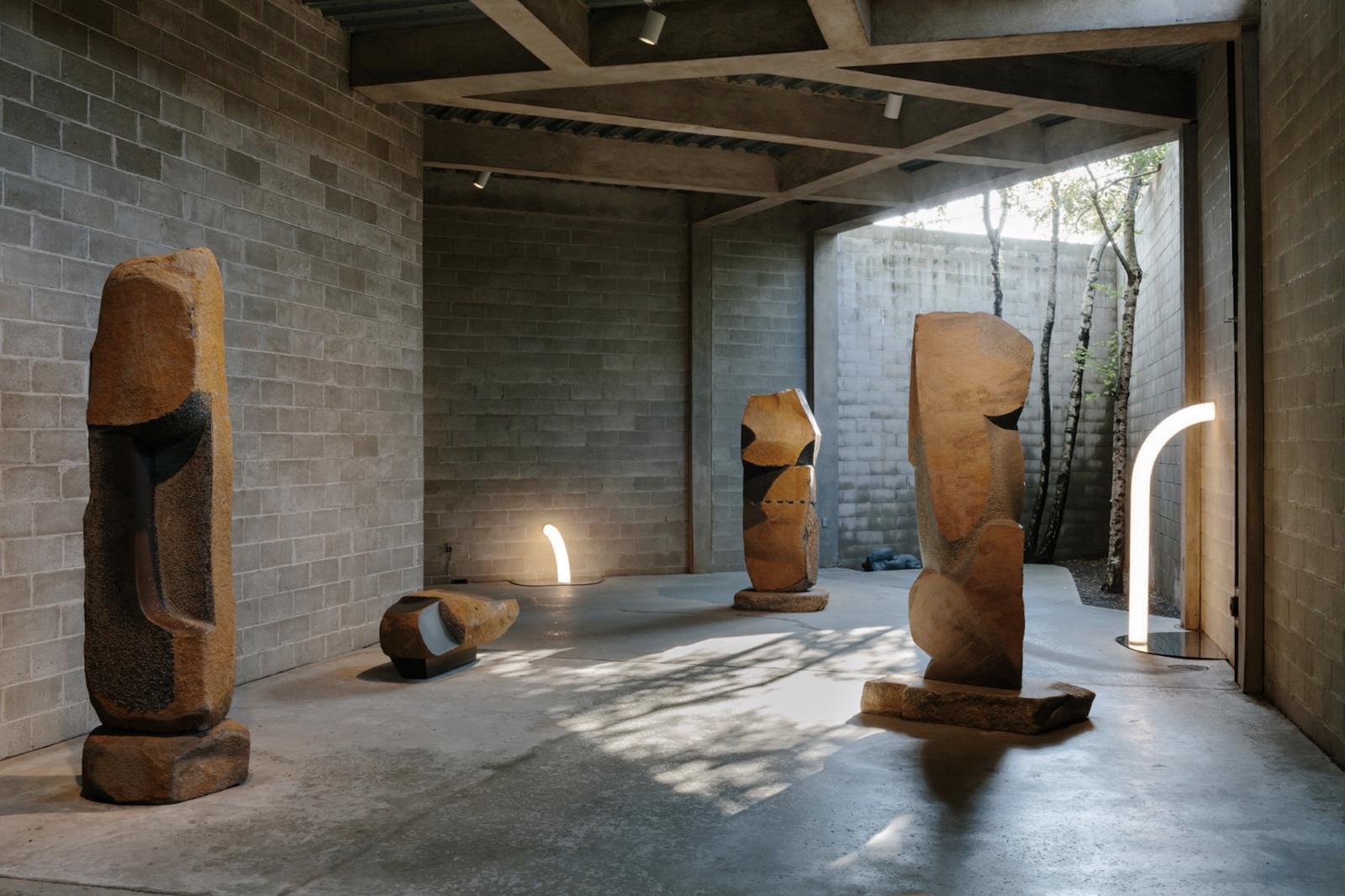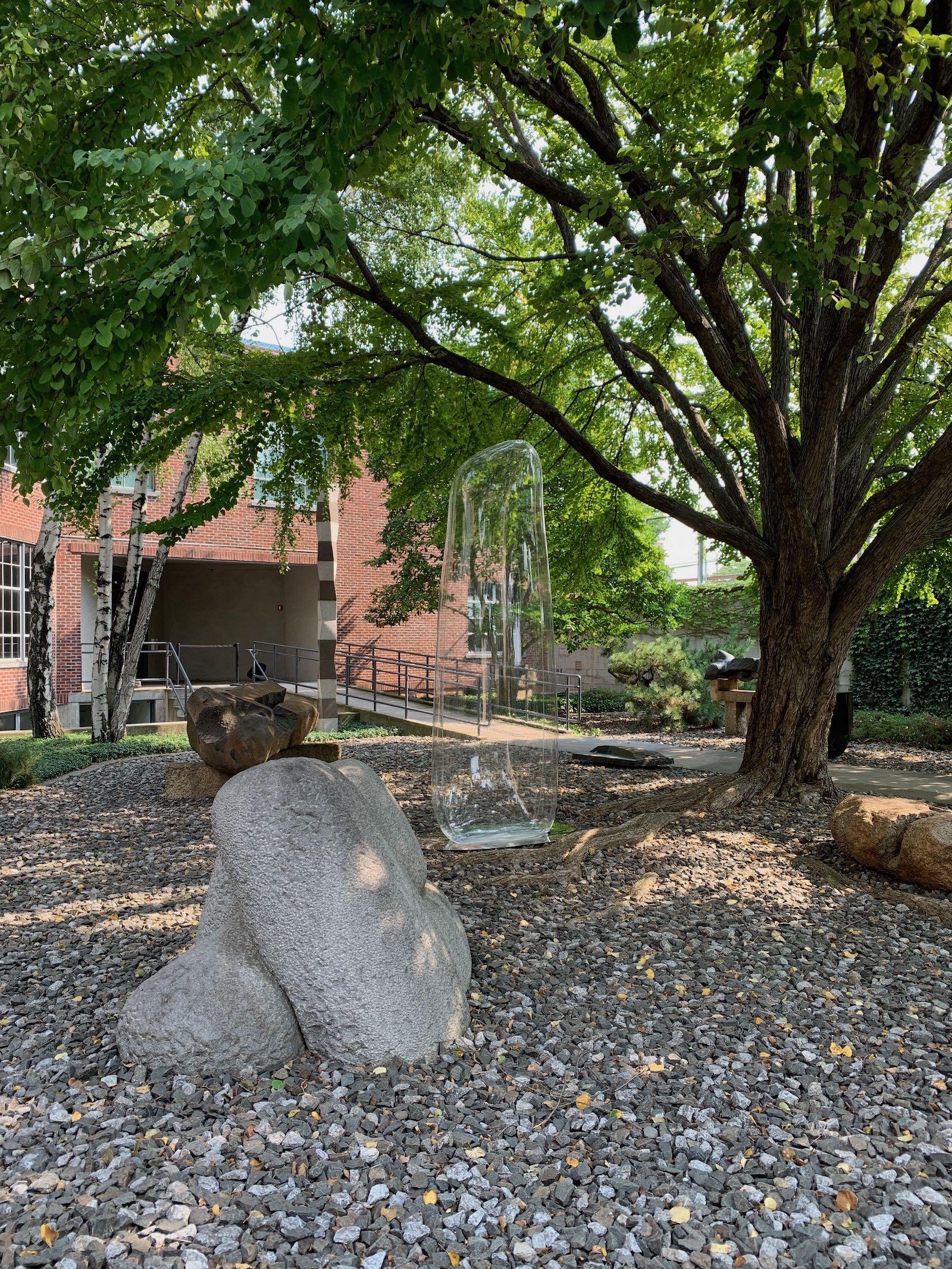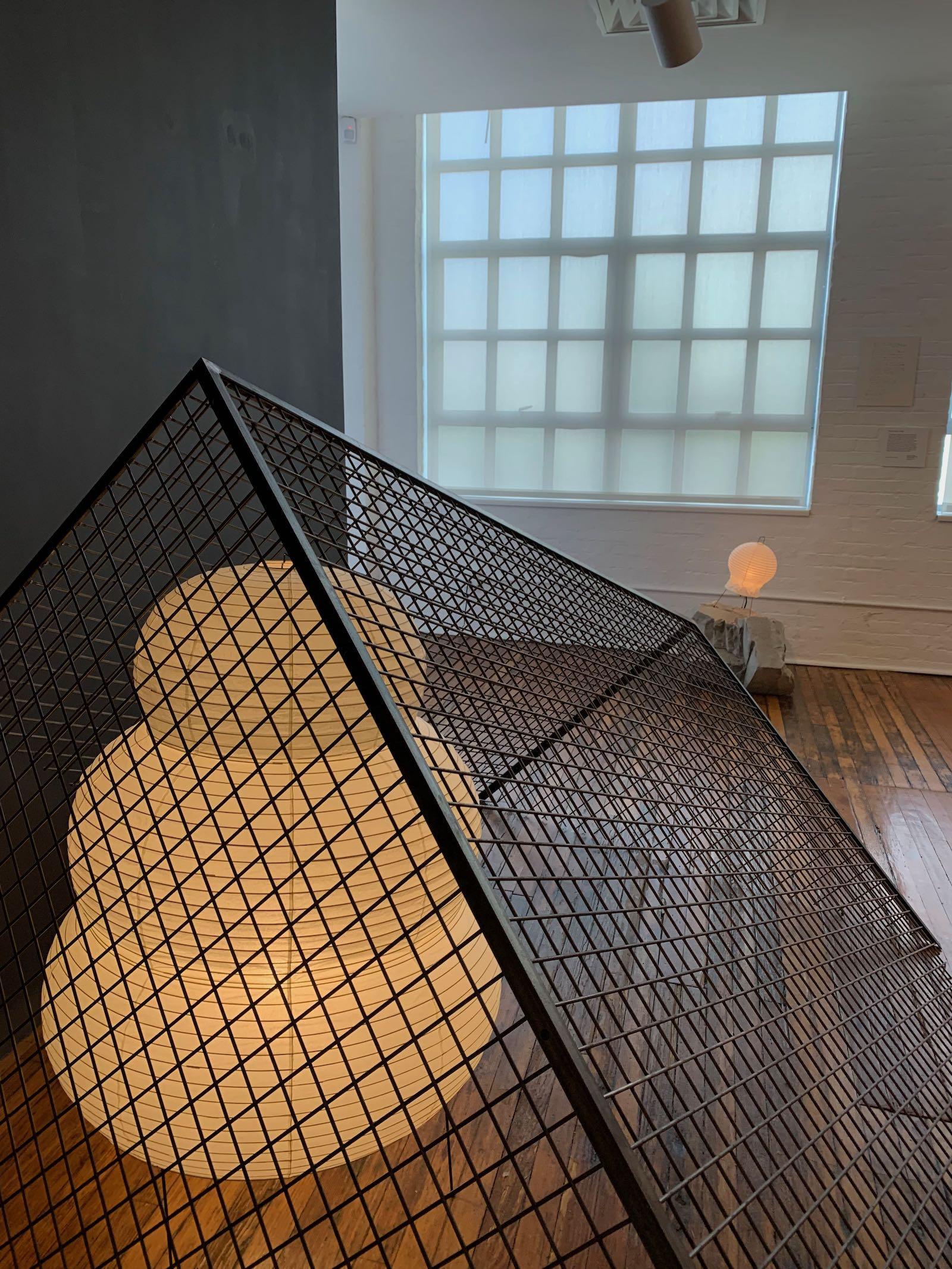Objects of Common Interest, whose work is rooted in still life installations and experiential environments and objects, with a focus on materiality, concept and tangible spatial experiences, saw Noguchi as a multidisciplinary creator living and working between east and west "who was equally inspired," Petaloti continued, "by all the things around him including nature, the city, culture and travels, creating an amalgamation of ideas and blending them into his personal work."
The work by Objects of Common Interest, which possesses a tactile and biomorphic quality, seamlessly interacts with the garden and the rooms of the Noguchi museum, and with the work of Isamu Noguchi as a whole. Just like Noguchi's sculpture Study in the Classical depicts a de-structured column, with its components seemingly swaying, Objects of Common interest's Doric Columns subvert what is the cornerstone of classical architecture by breaking it into section, by having each section decked in fabric and by allowing every component of the column to spin when people get close to the object.
"All of Noguchi's work for the home is meant to be touched, of course," curator Dakin Hart explained to Art & Object, "That's the reason he made sets for dance, too; he wanted to make sculpture that would be used: part of his larger project of reestablishing sculpture in an integral role in society." "We're not allowed to touch them in museums and galleries, but they can all be touched with the mind," he said. "His work is about empirical experience, empirical thought, and perpetuating empirical intelligence."



























